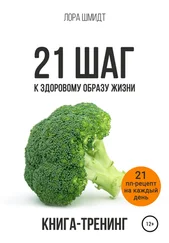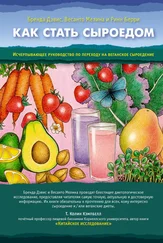53. Fitch C, Keim K. Position of the Academy of Nutrition and Dietetics: Use of nutritive and nonnutritive sweeteners. J Acad Nutr Diet . 2012; 112(5): 739–758.
54. American Diabetes Association. Low-Calorie Sweeteners: American Diabetes Association®. URL: http://www.diabetes.org/food-and-fitness/food/what-can-i-eat/understanding-carbohydrates/artificial-sweeteners/2014. Accessed January 22, 2019.
55. Sharma A, Amarnath S, Thulasimani M, Ramaswamy S. Artificial sweeteners as a sugar substitute: Are they really safe? Indian J Pharmacol . 2016; 48(3): 237–240.
56. Pearlman M, Obert J, Casey L. The association between artificial sweeteners and obesity. Curr Gastroenterol Rep . 2017; 19(12): 64.
57. Suez J, Korem T, Zilberman-Schapira G, et al. Non-caloric artificial sweeteners and the microbiome: findings and challenges. Gut Microbes . 2015; 6(2): 149–155.
58. Suez J, Korem T, Zeevi D, et al. Artificial sweeteners induce glucose intolerance by altering the gut microbiota. Nature . 2014; 514(7521): 181–186.
59. Swithers SE. Artificial sweeteners produce the counterintuitive effect of inducing metabolic derangements. Trends Endocrinol Metab . 2014; 24(9): 431–441.
60. Mattes RD, Popkin BM. Nonnutritive sweetener consumption in humans: effects on appetite and food intake and their putative mechanisms. Am J Clin Nutr . 2009; 89(1): 1–14.
61. Takata Y, Shu X-O, Gao Y-T, et al. Red meat and poultry intakes and risk of total and cause-specific mortality: Results from cohort studies of Chinese adults in Shanghai. PLoS One . 2013; 8(2): e56963.
62. Yang Q. Gain weight by “going diet?” Artificial sweeteners and the neurobiology of sugar cravings: Neuroscience 2010. Yale J Biol Med . 2010; 83(2): 101–108.
63. Slavin J. Fiber and Prebiotics: Mechanisms and Health Benefits. Nutrients. 2013: 5(4): 1417–1435.
64. Fuller S, Beck E, Salman H, Tapsell L. New horizons for the study of dietary fiber and health: A review. Plant Foods Hum Nutr . 2016; 71(1): 1–12.
65. Anderson JW, Baird P, Davis Jr RH, et al. Health benefits of dietary fiber. Nutr Rev . 2009; 67(4): 188–205.
66. Gray J. Dietary Fiber: Definition, Analysis, Physiology and Health. ILSI Europ. Brussels, Belgium: ILSI Europe; 2006.
67. Cummings JH, Stephen AM. Carbohydrate terminology and classification. Eur J Clin Nutr . 2007; 61 Suppl 1(S1): S5–18.
68. Englyst KN, Liu S, Englyst HN. Nutritional characterization and measurement of dietary carbohydrates. Eur J Clin Nutr . 2007; 61(S1): S19–S39.
69. Weickert MO, Pfeiffer AFH. Impact of dietary fiber consumption on insulin resistance and the prevention of type 2 diabetes. J Nutr . 2018; 148(1): 7–12.
70. Hoy K, Goldman JD. Fiber intake of the U.S. population. WhatweeatinAmerica.HANES2009–2010.FoodSurveysResearchGroupDietaryDataBriefNo.12.September2014.
71. Prebiotin/Prebiotic. Fiber Content Of Foods. URL: https://www.prebiotin.com/prebiotin-academy/fiber-content-of-foods/Accessed January 22, 2019.
72. The Daily Fiber Chart – Your Secret Key To Better Health. URL: http://www.puristat.com/fiber/fiberchart2.aspx. Accessed January 22, 2019.
73. U.S. Department of Agriculture. Agriculture Research Service. Nutrient Data Library. USDA National Nutrition Database for Standard Reference, Legacy Version Current: April 2018. URL: https://ndb.nal.usda.gov/ndb/search/list.
74. Konner M, Eaton SB. Paleolithic Nutrition. Nutr Clin Pract . 2010; 25(6): 594–602.
75. Shah M, Chandalia M, Adams-Huet B, et al. Effect of a high-fiber diet compared with a moderate-fiber diet on calcium and other mineral balances in subjects with type 2 diabetes. Diabetes Care . 2009; 32(6): 990–995.
76. Jenkins DJ, Wolever TM, Taylor RH, et al. Glycemic index of foods: a physiological basis for carbohydrate exchange. Am J Clin Nutr . 1981; 34(3): 362–366.
77. Brand-Miller JC, Stockmann K, Atkinson F, et al. Glycemic index, postprandial glycemia, and the shape of the curve in healthy subjects: analysis of a database of more than 1000 foods. Am J Clin Nutr . 2009; 89(1): 97–105.
78. Atkinson FS, Foster-Powell K, Brand-Miller JC. International Tables of Glycemic Index and Glycemic Load Values: 2008. Diabetes Care . 2008; 31(12): 2281–2283.
79. Gell P. From jelly beans to kidney beans: what diabetes educators should know about the glycemic index. Diabetes Educ . 2001; 27(4): 505–508.
80. Livesey G, Taylor R, Livesey H, Liu S. Is there a dose-response relation of dietary glycemic load to risk of type 2 diabetes? Meta-analysis of prospective cohort studies. Am J Clin Nutr .2013; 97(3): 584–596.
81. Foster-Powell K, Holt SH, Brand-Miller JC. International table of glycemic index and glycemic load values: 2002. Am J Clin Nutr . 2002; 76(1): 5–56.
82. Östman E, Granfeldt Y, Persson L, Björck I. Vinegar supplementation lowers glucose and insulin responses and increases satiety after a bread meal in healthy subjects. Eur J Clin Nutr . 2005; 59(9): 983–988.
83. Shishehbor F, Mansoori A, Shirani F. Vinegar consumption can attenuate postprandial glucose and insulin responses: A systematic review and meta-analysis of clinical trials. Diabetes Res Clin Pract . 2017; 127: 1–9.
84. Mitrou P, Petsiou E, Papakonstantinou E, et al. Vinegar consumption increases insulin-stimulated glucose uptake by the forearm muscle in humans with type 2 diabetes. J Diabetes Res .2015; 2015: 175–204.
85. Tremblay F, Lavigne C, Jacques H, Marette A. Role of dietary proteins and amino acids in the pathogenesis of insulin resistance. Annu Rev Nutr . 2007; 27(1): 293–310.
86. Duke University Medical Center. Too much protein, eaten along with fat, may lead to insulin resistance. ScienceDaily, 9 April 2009. URL: https://www.sciencedaily.com/releases/ 2009/04/090407130905.htm. Accessed January 22, 2019.
Глава 6
1. Malik VS, Li Y, Tobias DK, et al. Dietary protein intake and risk of type 2 diabetes in US men and women. Am J Epidemiol . 2016; 183(8): 715–728.
2. Shang X, Scott D, Hodge AM, et al. Dietary protein intake and risk of type 2 diabetes: Results from the Melbourne Collaborative Cohort Study and a meta-analysis of prospective studies. Am J Clin Nutr . 2016; 104(5): 1352–1365.
3. Virtanen HEK, Koskinen TT, Voutilainen S, et al. Intake of different dietary proteins and risk of type 2 diabetes in men: The Kuopio Ischaemic Heart Disease Risk Factor Study. Br J Nutr . 2017; 117(06): 882–893.
4. Levine ME, Suarez JA, Brandhorst S, et al. Low protein intake is associated with a major reduction in IGF-1, cancer, and overall mortality in the 65 and younger but not older population. Cell Metab . 2014; 19(3): 407–417.
5. Barnard ND, Cohen J, Jenkins DJA, et al. A low-fat vegan diet and a conventional diabetes diet in the treatment of type 2 diabetes: A randomized, controlled, 74-wk clinical trial. Am J Clin Nutr . 2009; 89(5): 1588–1596.
6. Kahleova H, Tura A, Hill M, Holubkov R, Barnard ND. A plant-based dietary intervention improves beta-cell function and insulin resistance in overweight adults: A 16-week randomized clinical trial. Nutrients . 2018; 10(2).
7. Kahleova H, Matoulek M, Malinska H, et al. Vegetarian diet improves insulin resistance and oxidative stress markers more than conventional diet in subjects with type 2 diabetes. Diabet Med . 2011; 28(5): 549–559.
8. Dunaief DM, Fuhrman J, Dunaief JL, Ying G. Glycemic and cardiovascular parameters improved in type 2 diabetes with the high nutrient density (HND) diet. Open J Prev Med . 2012; 2(3): 364–371.
Читать дальше
Конец ознакомительного отрывка
Купить книгу




![Карин Дина - Справочник сыроеда [Краткое руководство по питанию свежей растительной пищей]](/books/389267/karin-dina-spravochnik-syroeda-kratkoe-rukovodstvo-thumb.webp)







